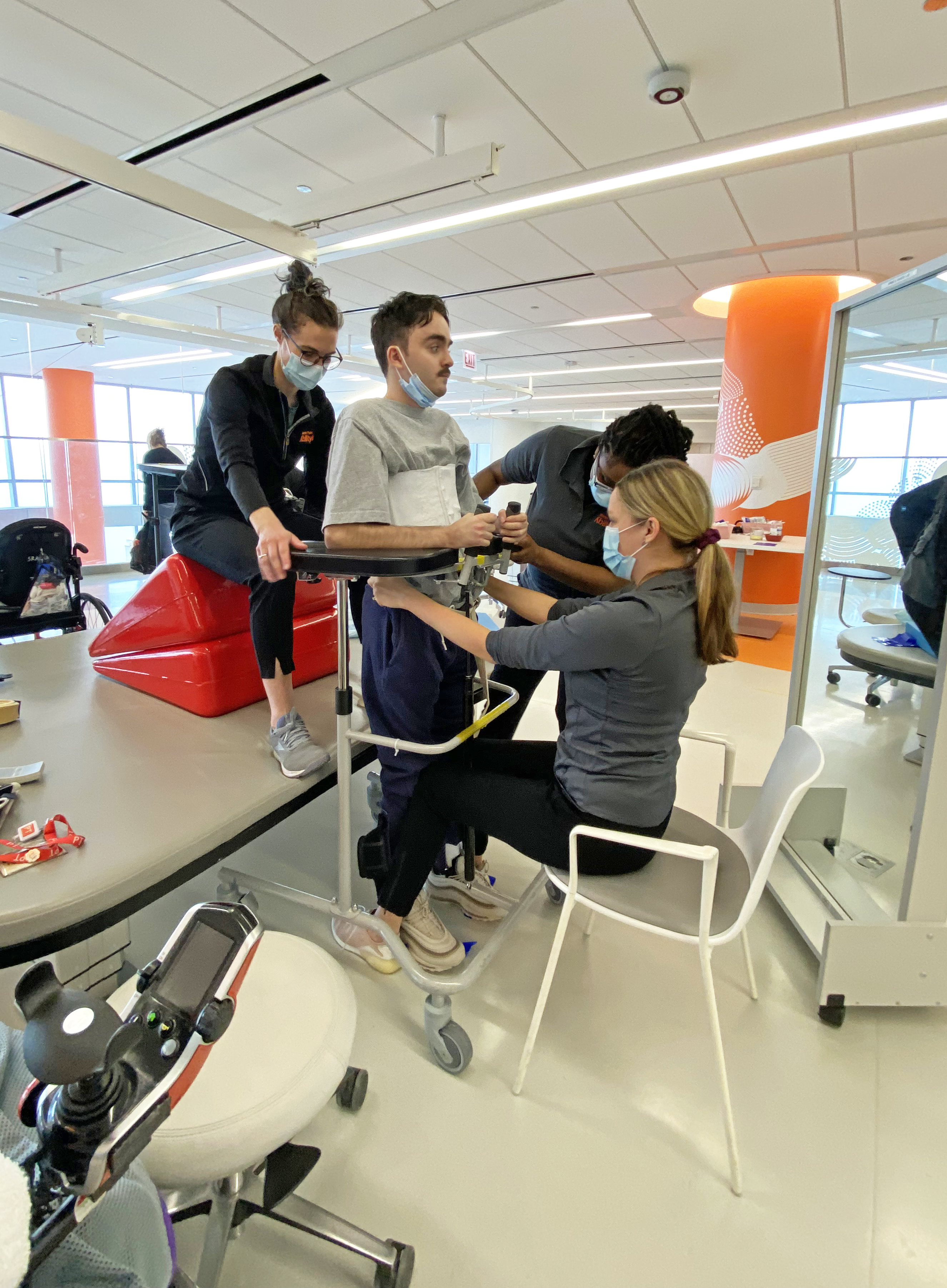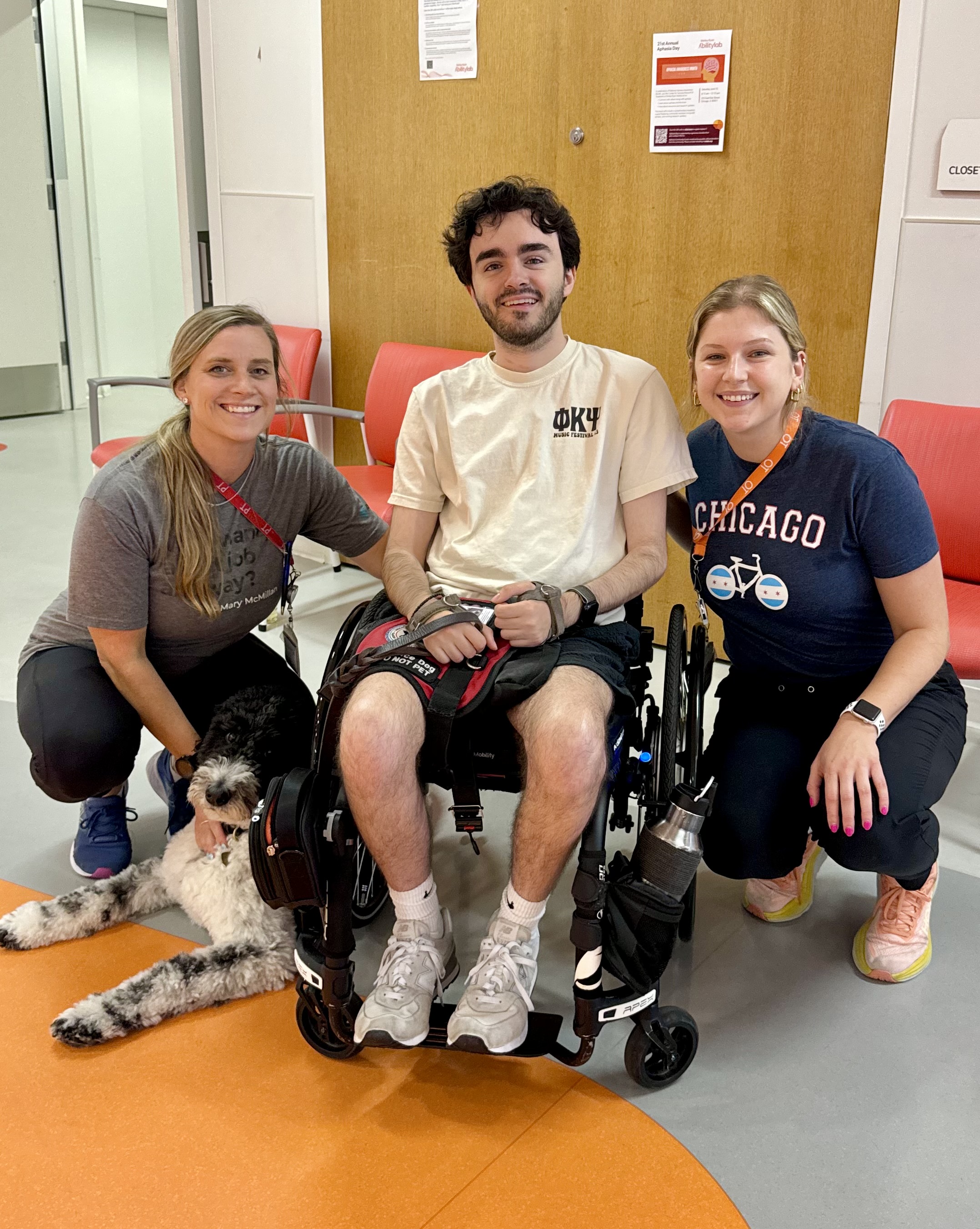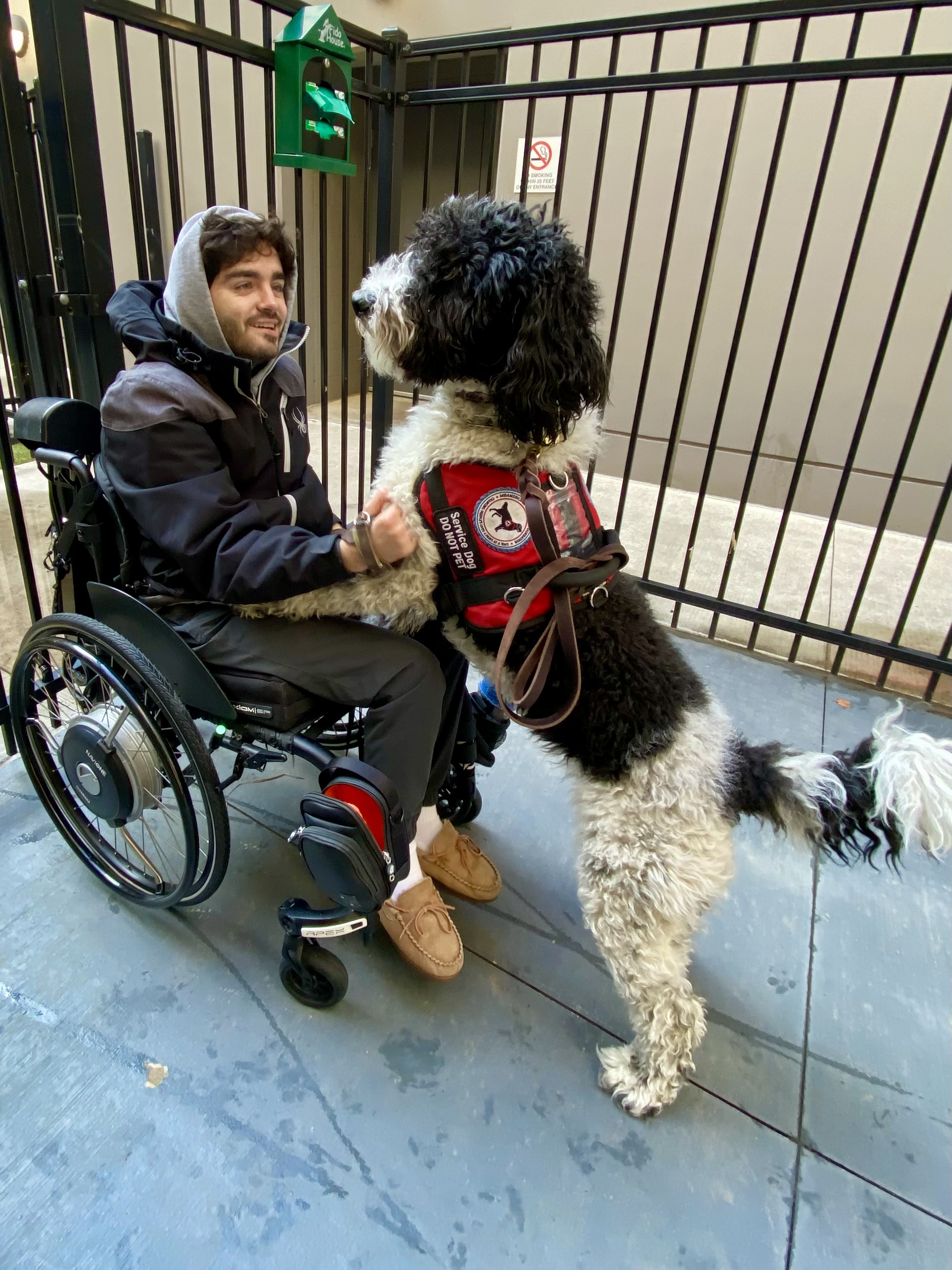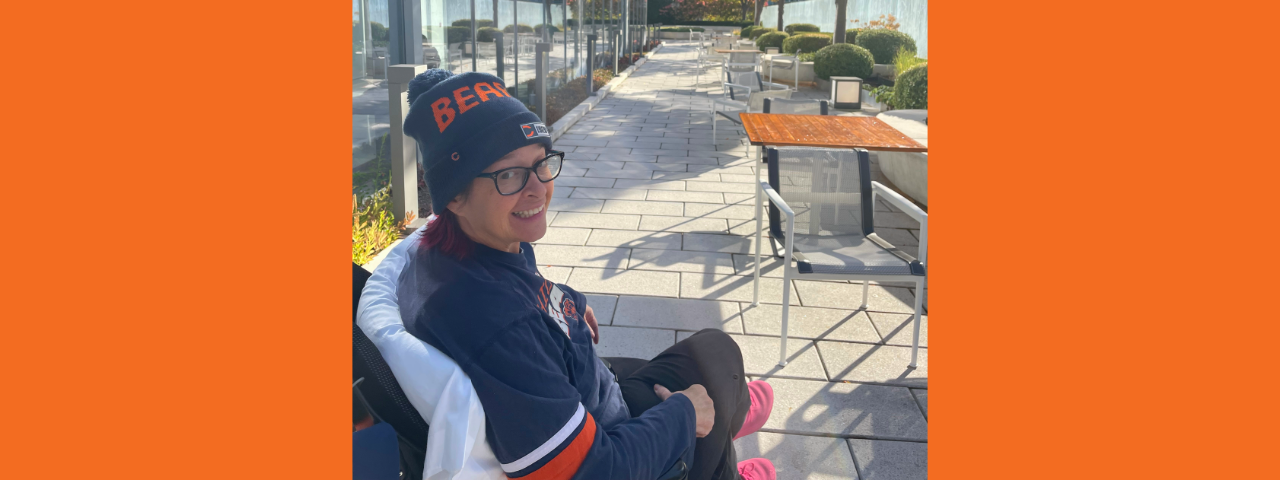Body
Stephanos “Steph” S. was thriving as a student, studying pre-law at a university in rural Ohio, when his college experience was suddenly sidelined.
After a late night of studying, Steph drove back to his dorm by way of the high-speed country roads surrounding his college. With limited signs to warn of twists and turns and no lights to illuminate his way, he drove off the road. He experienced a spinal cord injury (SCI) in the car accident, resulting in quadriplegia — paralysis of all four limbs. His injury was incomplete, meaning that the spinal cord was not fully damaged; some nerve signals could still travel between the brain and body.
Steph spent a month in an acute-care hospital in Columbus, Ohio, to stabilize medically before returning home to Chicago’s northwest suburbs and embarking on an intensive rehabilitation journey at Shirley Ryan AbilityLab.
Though Steph described his car accident as near-fatal, he never gave up hope that he would live independently and continue his education — and he credits his support system and therapists at Shirley Ryan AbilityLab with helping him return to life as a college student.
From Small Muscle Movements to Standing Upright Again
Body
When Steph first arrived at Shirley Ryan AbilityLab, he was unable to move on his own. Also, while he had been on a ventilator prior to coming to Chicago for rehabilitation, as his lung had collapsed from the car accident, he still had a tracheostomy tube to help him breathe.
As physical therapy (PT) got underway, Steph and his clinical team first focused on reaching small milestones.
“My physical therapist, Amy, started by helping me make the smallest, tiniest functional movements in my muscles. She got me to move my toe, lift my ankle,” said Steph. “A small twitch was a huge milestone.”
From there, Steph progressed to larger, combined movements, such as lifting his whole leg up. He learned to stand again by working first at a tilt table and progressing to a standing frame — equipment that allows patients to stand in a weight-bearing position and helps them acclimate to being upright after prolonged time in a hospital bed.

Soon, Steph was ready to get on the treadmill for gait training — a technique that helps patients gain strength, mobility and coordination as they relearn to walk. However, Steph faced early challenges: He had muscle spasticity, or muscle tightness that can occur after an injury to the nerves or spinal cord. As a result, he had limited control of his lower-body function, and experienced involuntary leg movements with significant tightness in his legs.
Also, because Steph had worn a neck brace after the car accident, he didn’t have the neck strength to hold his head up on his own.
Ever encouraging and persistent, another one of his PTs, Jen, tied a band on Steph’s head to keep his head upright while he was on the treadmill.
“The physical therapists are really like angels. They’re amazing people,” said Steph. “They pushed me so that I began to make so much progress with walking.”

Beyond the paralysis in his limbs, Steph’s vocal cords also had become paralyzed because of the SCI. His tracheostomy tube was removed once he was strong enough to cough on his own, and his voice returned as the swelling in his neck lessened during his recovery. He benefited from fun, effective exercises in speech-language therapy to improve his vocal control — from lip trills and blowing raspberries to screaming his name out loud.
OT Helps Steph Refocus on Return to College
Body
Throughout Steph’s recovery journey, he remained focused on eventually returning to college. During occupational therapy (OT), he collaborated with his occupational therapist, Meghan, to focus on activities of daily living that would enable him to live independently.
For example, he learned important skills like dressing and showering. He also worked to improve his tenodesis grasp — a wrist-and-hand movement that allows a person to open and close their fingers to grasp objects — so he would have the fine motor skills required for eating and picking up utensils.
Initially, Meghan placed a molded, plastic cuff around Steph’s hand to make it easier to pick up items. Over time, he sharpened his dexterity to pick up tiny items like beads with his own fingers. No matter what, Meghan would not let Steph cut corners in OT, challenging him to use his hands whenever possible.
“When we started working on things like twisting a cap to open a water bottle, she said ‘don’t use your teeth! Your dentist will kill me!’” he quipped.
After three months of inpatient care, Steph transitioned to Shirley Ryan AbilityLab’s Streeterville DayRehab Center, where he continued his recovery for nearly nine months.
“PT was amazing for my recovery — for cardiovascular health, strength and conditioning — and OT was essential for planning my reintegration into school,” he said.
Steph Heads to Campus
Body
Steph is now 23 and a junior in college, having transferred to a different university in Ohio with a more accessible campus and to be closer to family who live in the area.
Today, he can walk independently with the support of leg braces and a walker. While he primarily uses his walker at home, he gets around campus by using a manual wheelchair with power assist.
Steph remains connected to his Shirley Ryan AbilityLab OT, Meghan, who helped him brainstorm adaptive equipment and other techniques to make it easier to manage aspects of college life that others may take for granted — like using a computer, zipping up a backpack, carrying books or accessing different parts of campus as a wheelchair user. He uses speech-to-text software, as well as a drawing tablet instead of a mouse because it is easier to hold.
“I highly recommend this to anyone with limited hand function,” he said. “Not only does it make navigating a computer so much easier, but you also can use it to play most video games.”
Service Dog Provides Additional Support at School
Body
In addition to the support he received at Shirley Ryan AbilityLab, Steph now has an adorable buddy at his side who also helps make school a success: his service dog, Noel.
“The big thing Noel does is retrieval. She knows how to pick things up for me, like bringing me my shoes, or I can give her my clothes and she runs them to the laundry basket,” said Steph. “She also can press the handicap button for me on buildings, and she acts as a brace to help me stand up. What can’t she do?”
Reflecting on the early days after his car accident, Steph was told he may never move again or live without a ventilator. Now, he offers encouragement to others recovering from an SCI.
“Never think to yourself, ‘I’m done, this is over, my life is never going back to the way it was,’” he said. “I never once thought I wouldn’t go back to school. I never thought I would have to live with my parents. Thanks to my amazing support system — therapists, nurses, doctors, care managers, family and really supportive friends — we have moved through this and overcome it together.”

